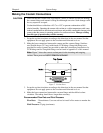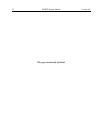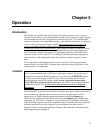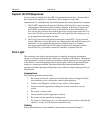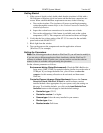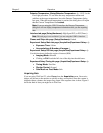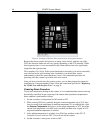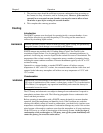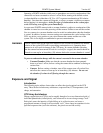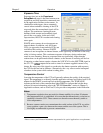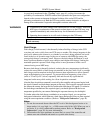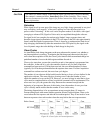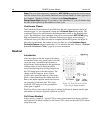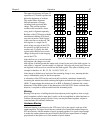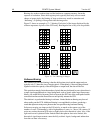
Chapter 5 Operation 41
5. The previous steps should be sufficient to prevent condensation from occurring on
the camera (its array, electronics, and /or coolant ports). However, if the camera is
currently in an evacuated vacuum chamber, you may also want to allow at least
30 minutes to pass before venting the vacuum chamber.
6. This completes the warm-up procedure.
Cooling
Introduction
The PI-MTE cameras were developed for operation inside a vacuum chamber. A two-
stage Peltier effect device provides the primary CCD cooling and the waste heat is
removed by circulating liquid coolant.
Sustained operation of these cameras without providing liquid cooling will permanently
damage the camera. Such damage is not covered by the Warranty.
PI-MTE cameras are provided with 1/4 tubing fittings (Cajon Ultra-Torr®) for the
circulation of liquid coolant. Use of water/glycol solution (i.e., automotive antifreeze,) is
preferred. Avoid using any corrosive liquid. Set the coolant flow rate to 2 liters/minute. The
temperature of the coolant is usually a compromise among a number of competing factors
including the camera ambient conditions. Princeton Instruments typically uses 10° to 15°C
coolant for testing.
Operated in a vacuum chamber, a standard PI-MTE camera will achieve an array
temperature of -40°C with 15°C coolant. An evacuated camera with the visible nose and
operated in the laboratory atmosphere will achieve an array temperature of -25°C with
15°C coolant.
Condensation
Condensation can cause damage to the camera and will void the warranty. If there are
ANY signs of condensation on the camera's coolant pipes, on the CCD, or on the interior
CCD window (if so equipped), stop operation immediately and contact the factory for
recommended corrective action.
The CCD array and electronics are subject to damage from condensation if exposed to
atmospheric moisture when cold. The following paragraphs discuss condensation risk
factors and their prevention.
Before operating in atmosphere with a PI-MTE camera designed for vacuum chamber
operation, check the temperature and humidity levels. If the conditions are such that
running with chilled coolant will result in condensation, you should only circulate room
temperature coolant through the camera. Condensation damage may occur if the coolant
pipes become cold enough to condense water from the atmosphere or if water condenses
on the CCD array as a result of deterioration of the internal vacuum. At the first sign of
condensation on the coolant pipes or CCD array, turn off the system immediately and
contact the factory for corrective action advice.
WARNINGS
WARNING



